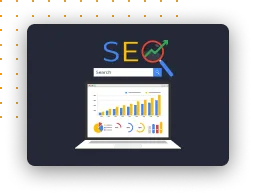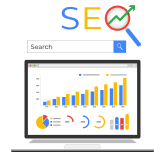Content marketing is one of the most effective ways for small businesses to connect with customers, build brand awareness, and increase sales. Unlike traditional advertising, content marketing allows you to engage your audience with valuable, informative, and entertaining content that resonates with their needs and interests. If you’re new to content marketing, it can feel overwhelming to know where to start. This guide to content marketing for small business beginners will walk you through the essentials, helping you build a foundation for a successful content marketing strategy.
Why Content Marketing Matters for Small Businesses
Content marketing goes beyond promoting products or services. It’s about providing valuable information that educates, entertains, and builds trust with your audience. For small businesses, content marketing offers a unique opportunity to stand out from competitors without needing a huge advertising budget. According to recent studies, content marketing generates over three times as many leads as traditional marketing methods and costs 62% less.
With the right content marketing strategy, small businesses can:
- Boost brand visibility in a competitive market.
- Drive traffic to their websites.
- Establish authority within their industry.
- Engage potential customers on a deeper level.
- Convert leads into loyal customers.
Let’s explore how to get started with content marketing, even if you’re a beginner.
Define Your Content Marketing Goals
Before diving into content creation, start by defining clear goals for your content marketing efforts. These goals will guide your strategy and help you measure success. Common content marketing goals for small businesses include:
- Increasing brand awareness within your local market.
- Generating website traffic to showcase products or services.
- Growing your email subscriber list to reach a wider audience.
- Improving customer engagement through social media and other platforms.
- Educating potential customers about industry topics or pain points.
Define your goals in line with your business objectives and make them specific, measurable, achievable, relevant, and time-bound (SMART).
Know Your Target Audience
Understanding your audience is the cornerstone of effective content marketing. Knowing who you’re creating content for will guide every decision in your content strategy, from topics to distribution channels. Conduct research to identify your ideal customer:
- Analyse demographics: Consider your audience's age, gender, location, and income.
- Identify pain points: What are the common challenges or needs your audience has that you can address?
- Define interests and preferences: What type of content does your audience engage with most? Are they more likely to read blog posts, watch videos, or interact on social media?
Creating customer personas (semi-fictional representations of your ideal customers) can help clarify who your content should appeal to and what format will resonate best.
Choose the Right Content Types
With a clear understanding of your audience, the next step is to choose the types of content that will best engage them. Different types of content serve different purposes, and mixing various content formats can help you reach and appeal to a wider audience.
Popular content types for small businesses include:
- Blog posts: Blog articles are great for driving organic traffic and educating customers. They also boost your website’s SEO.
- Social media posts: Social media platforms allow you to connect with customers in real time and build a community around your brand.
- Email newsletters: Newsletters keep your customers updated with valuable information, offers, and announcements.
- Videos: Video content is highly engaging and ideal for explaining complex topics, product demonstrations, or showcasing customer testimonials.
- Infographics: Visual content, like infographics, makes data easy to understand and shareable.
For beginners, it’s wise to start with one or two content types based on your audience preferences and the resources you have available.
Create a Content Calendar

A content calendar helps you plan and organise your content marketing efforts. It ensures that your content is published consistently and aligns with your marketing goals.
Here’s how to create a simple content calendar:
- Decide on frequency: Determine how often you’ll publish content. Start with a manageable schedule, such as one blog post per week or three social media posts per week.
- Select themes: Plan content themes that resonate with your audience. For instance, a local bakery might choose themes like "Seasonal Recipes," "Baking Tips," or "Healthy Alternatives."
- Choose dates: Schedule each piece of content for a specific date. Remember to consider holidays, special events, or seasonal trends.
- Include keywords: If SEO is part of your strategy, plan keywords for each content piece to improve visibility in search engines.
Consistency is key in content marketing. Even if you’re just starting, stick to your schedule to build audience expectations and trust.
Optimise for Search Engines (SEO)
SEO (Search Engine Optimisation) is essential for increasing the visibility of your content online. By incorporating keywords and other SEO practices into your content, you increase the chances of your website appearing in search results when potential customers look for relevant information.
- Conduct keyword research: Use tools like Google Keyword Planner or Ubersuggest to find keywords related to your business and audience.
- Use keywords naturally: Incorporate keywords into your content without overloading. Focus on including them in headings, subheadings, and naturally within the text.
- Optimise meta descriptions: Each blog post or webpage should have a meta description (a brief summary) that includes the primary keyword.
- Improve page speed and mobile-friendliness: Search engines favour fast-loading and mobile-friendly websites, so optimise your site accordingly.
Engage with Your Audience
Content marketing isn’t a one-way street. Engaging with your audience builds relationships and encourages customer loyalty. Respond to comments, questions, or feedback promptly, whether on your blog, social media, or other platforms.
Ways to engage with your audience include:
- Encouraging social shares: Ask readers to share content if they found it helpful, and make sure your website has social sharing buttons.
- Hosting Q&A sessions: Use platforms like Instagram or Facebook to host live Q&A sessions where customers can ask questions in real time.
- Running polls or surveys: These provide valuable insights into your customers’ preferences and foster a sense of community.
Repurpose Content for Maximum Reach

Content repurposing involves taking a single piece of content and adapting it for multiple platforms. This approach saves time and ensures that your message reaches different audience segments.
Some ideas for repurposing content include:
- Turning a blog post into a social media series: Highlight the key points of your blog post across multiple social media posts.
- Creating an infographic from a blog post: Summarise a blog article into a visually appealing infographic for easy sharing.
- Developing a video from a written article: Record a short video or tutorial based on the information in a blog post, which can appeal to video-preference audiences.
Repurposing content maximises your content’s impact and gives it a longer lifespan across various platforms.
Track Your Results and Adjust
Measuring the performance of your content marketing efforts is essential to understand what works and what doesn’t. Tracking allows you to refine your strategy and focus on the content types and topics that provide the most value.
Metrics to track include:
- Website traffic: Check which blog posts or pages attract the most visitors.
- Engagement: Analyse likes, shares, comments, and other interactions on social media and blog content.
- Conversion rate: Measure how many people complete a desired action, like signing up for a newsletter or making a purchase.
- Bounce rate: The percentage of visitors who leave after viewing only one page. A high bounce rate might indicate that content isn’t relevant to your audience.
Using tools like Google Analytics, HubSpot, or social media insights can help you track these metrics and make data-driven decisions.
Content Marketing for Small Business Beginners FAQ
What is content marketing, and why is it essential for small businesses?
Content marketing involves creating valuable content that resonates with your audience’s needs and interests. It’s crucial for small businesses as it builds brand awareness, increases customer engagement, and drives sales.
What types of content should I create for my small business?
Start with content types that align with your audience’s preferences, such as blog posts, social media content, videos, or email newsletters. Over time, experiment with various formats to find what works best for your audience.
How often should I publish content as a beginner?
Consistency is more important than frequency. Begin with a manageable schedule, such as one blog post per week or three social media posts weekly, and gradually increase as you become more comfortable.
How can I track the success of my content marketing efforts?
Use analytics tools to measure metrics like website traffic, social media engagement, conversion rate, and bounce rate. Regularly review these metrics to refine your strategy and focus on what delivers the best results.
Why is SEO important for content marketing?
SEO improves the visibility of your content in search engine results, making it easier for potential customers to find you online. Implementing SEO best practices helps drive organic traffic to your website
How can I engage my audience through content marketing?
Engage by responding to comments, hosting Q&A sessions, running polls or surveys, and encouraging social shares. Interaction fosters a sense of community
Conclusion
Content marketing is an incredibly effective tool for small businesses looking to attract and retain customers without a large advertising budget. This guide to content marketing for small business beginners provides a strong foundation, from understanding your audience and choosing content types to implementing SEO and tracking results. With a well-planned strategy and consistent effort, you can establish a robust online presence that builds brand trust and drives growth for your business.
Contact Us
(+44) 03308080546
Send use a Message
Request a Free quotation





